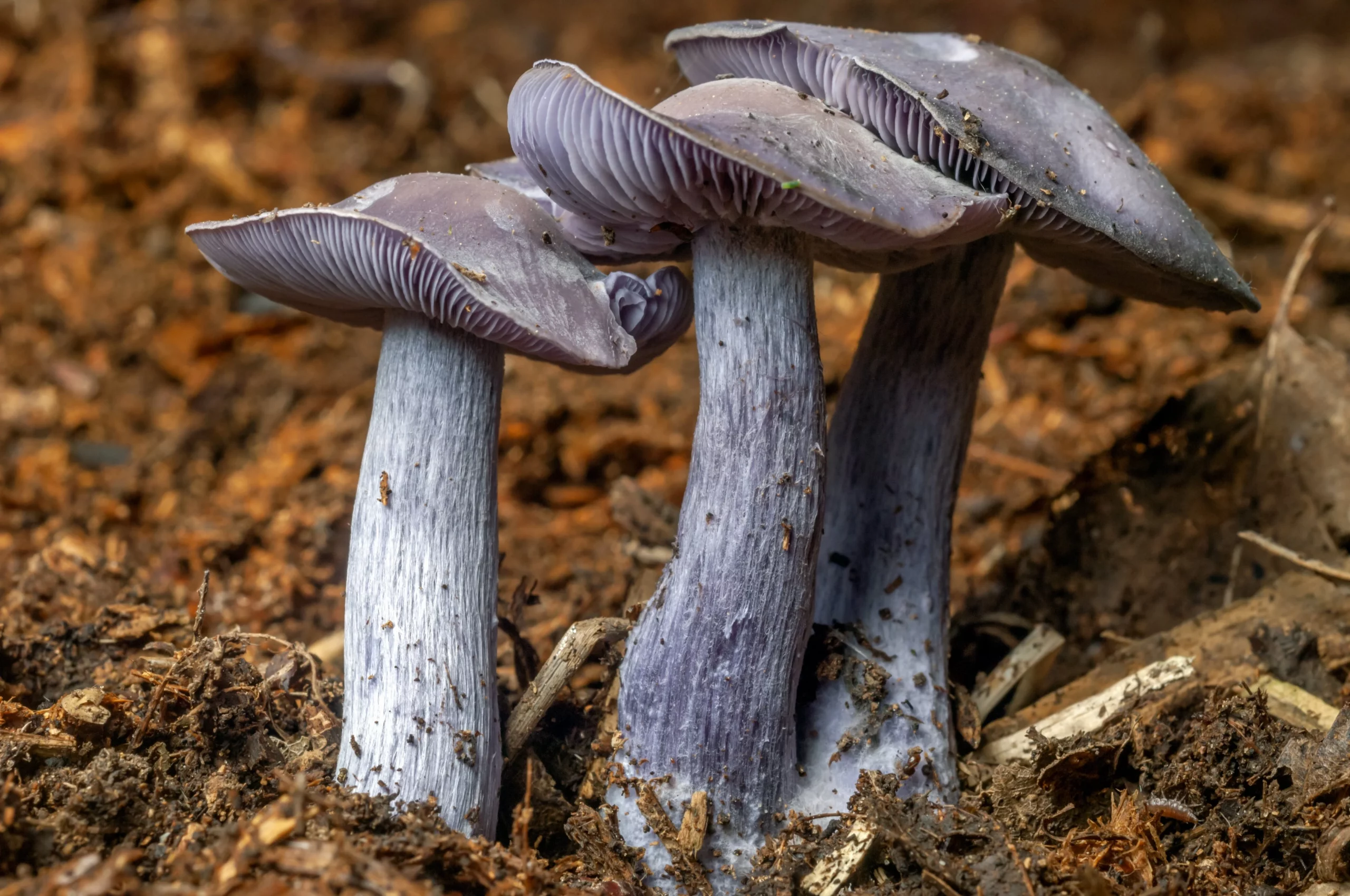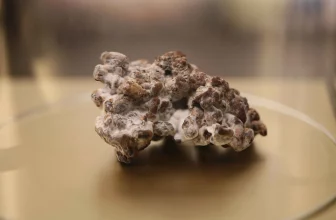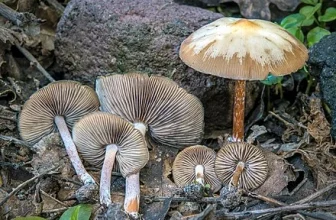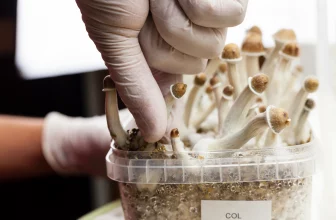
The Blue Foot Mushroom, which you can nerdily call by its Latin title Psilocybe caerulipes (Latin for “blue foot,” if you want extra nerd points), is a rare and much-coveted variety of psychedelic mushroom that contains both psilocybin and psilocin.
What is Psilocybe Caerulipes?
You can recognize Psilocybe caerulipes by knowing its characteristics. It has a cap that’s between 1 and 3.5 cm in diameter, with a conic/convex shape. The margin of the cap will turn inwards when the mushroom is young but turns convex or flat as the mushroom ages. You’ll also notice a small nub on top — that’s called an umbo.
When moist, the cap will feel sticky and the mushroom will be cinnamon-brown. When dried, it’s more of a cinnamon buff. The flesh of the mushroom is thin and develops a bluish bruise when touched.
The stipe is between 3 and 6 cm long and 1.5 to 3 cm thick and grows thicker towards the bottom.
Where Can I find Blue Foot Mushrooms?
You can find Blue Foot Mushrooms between late May and December, typically in deciduous forests where there’s plenty of decaying hardwood around. Look for beech, birch, or maple logs with either solo shrooms or clumps of them.
The most common territory for Blue Foot Mushrooms is on the east coast of North America between North Carolina and Nova Scotia, though they’ll span west as far as Michigan. They favor places that are moist and cool.
What Are the Effects of Blue Foot Mushrooms?
Blue Foot Mushrooms have around 11% psilocybin by dry weight, making them a bit less potent than your standard fresh magic mushrooms. The effects tend to last between 4 and 10 hours, though this will vary based on your body’s makeup and environmental factors.
You can expect the onset of effects between 20 and 60 minutes after taking Blue Foot Mushrooms. It will start with slight visual distortions, which will grow until it peaks around 2 hours and plateaus for another 4 to 6 hours.
Blue Foot Mushrooms aren’t too different from shrooms like Psilocybe cubensis, but they are generally a bit less intense. You’ll notice changes in your heart rate, increased reflexes, lower blood pressure, and pupil dilation. You may also notice some unwanted side effects like nausea or reduced coordination.
Like other magic mushrooms, Blue Foot Mushrooms are not addictive and do not cause toxicity.
Psilocybin affects the prefrontal cortex part of the brain, which affects our social control and ability to differentiate thoughts and consequences. It also affects our subjective experience of how quickly time passes, which is why Blue Foot Mushrooms can make it feel as if time is slowing down.
They can also make you feel pleasantly connected to the universe, to nature, and to other humans. Hallucinations may occur and will vary by the person. Senses may blend, allowing you to “hear” colors or “see” smells.
Expect a potential out-of-body experience and changes in the way you think. You may find past experiences melting into the present and have difficulty focusing. After 6 to 8 hours, you’ll enter the comedown period, which is a pleasant, mellow experience in which you gratefully relearn all you know and regain control of your body and thoughts. It differs from hard drugs and is even different from the comedown period of marijuana strains.
Things to Know Before Your Trip
Know that you are likely to experience a profound emotional journey when you take Blue Foot Mushrooms. Any emotions you feel normally will be amplified by an order of magnitude — happiness will become euphoria, sadness will become misery, excitement will become exuberance, etc.
That’s why it’s so important to go into your trip in a good state of mind. Be prepared: if you’re not in a good place emotionally, psilocybin is likely to make bad memories and thoughts more intense.
There are several ways to keep negative thoughts from taking over by preparing properly:
- Spend 5 to 15 minutes meditating before you trip.
- Place yourself in a safe, loving environment — either in nature, in your bedroom, or somewhere else that brings you peace.
- Listen to relaxing music while lying down.
- Get rid of clutter before tripping since clutter can lead to anxiety.
- Have someone there to guide you and make sure you stay safe during your mushroom trip.
- Talk out loud to your feelings. If you start to go somewhere negative, you can tell that negative emotion, “take me somewhere else.” This works wonders.
- Know that even if you do have a bad trip, it will only be temporary. Sometimes a bad trip can be life-changing as well, putting your negative issues in perspective.
For more information, check out our list of magic mushroom FAQs.






